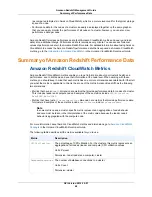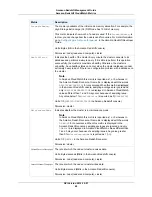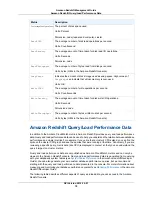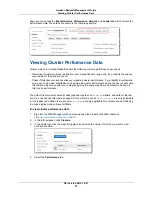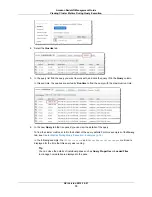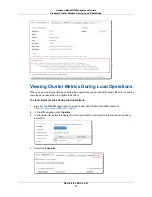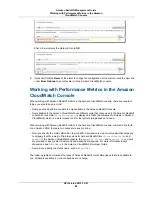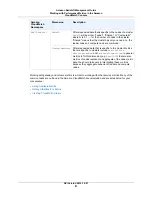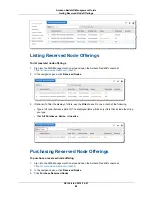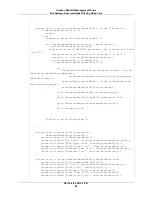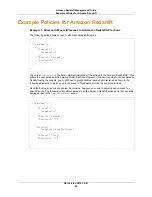
Purchasing Amazon Redshift
Reserved Nodes
Topics
•
Overview (p. 82)
•
Purchasing a Reserved Node Offering with the Amazon Redshift Console (p. 83)
•
Purchasing a Reserved Node Offering Using AWS SDK for Java (p. 86)
•
Purchase a Reserved Node Offering Using Amazon Redshift CLI and API (p. 89)
Overview
When you create an Amazon Redshift cluster, you specify information such the AWS region where you
want Amazon Redshift to create the cluster, the number of nodes you want in the cluster, and the node
type. Amazon Redshift provisions the requested compute nodes as soon as you request them, and your
AWS account is billed the hourly rate for the provisioned compute nodes.
If you intend to keep your cluster running continuously for a prolonged period, say, one year or more, you
can pay considerably less by reserving the compute nodes for a one-year or three-year period. To reserve
compute nodes, you purchase what are called reserved node offerings. You purchase one offering for
each compute node that you want to reserve.
When you reserve a compute node, you pay a fixed up-front charge and then an hourly recurring charge,
whether your cluster is running or not. The hourly charges, however, are significantly lower than those
for on-demand usage. For detailed pricing information, go to the
Amazon Redshift
product detail page.
What Are Reserved Node Offerings?
To reserve a compute node, you choose a node type and the duration for which you want to reserve the
compute nodes.You then specify the utilization type, the anticipated utilization of the node, which influences
pricing. At present, Amazon Redshift only offers "Heavy Utilization" reserved node offerings.
You can purchase a reserved node offering for an existing Amazon Redshift cluster. If you do so, remember
that the node type and region of your reserved node must match those for your existing cluster. If these
values don't match, Amazon Redshift cannot bill the cluster nodes at the lower reserved node rate, and
so your cluster nodes will continue to accrue charges at the on-demand rate. In addition, your AWS
API Version 2012-12-01
82
Amazon Redshift Management Guide
Overview

